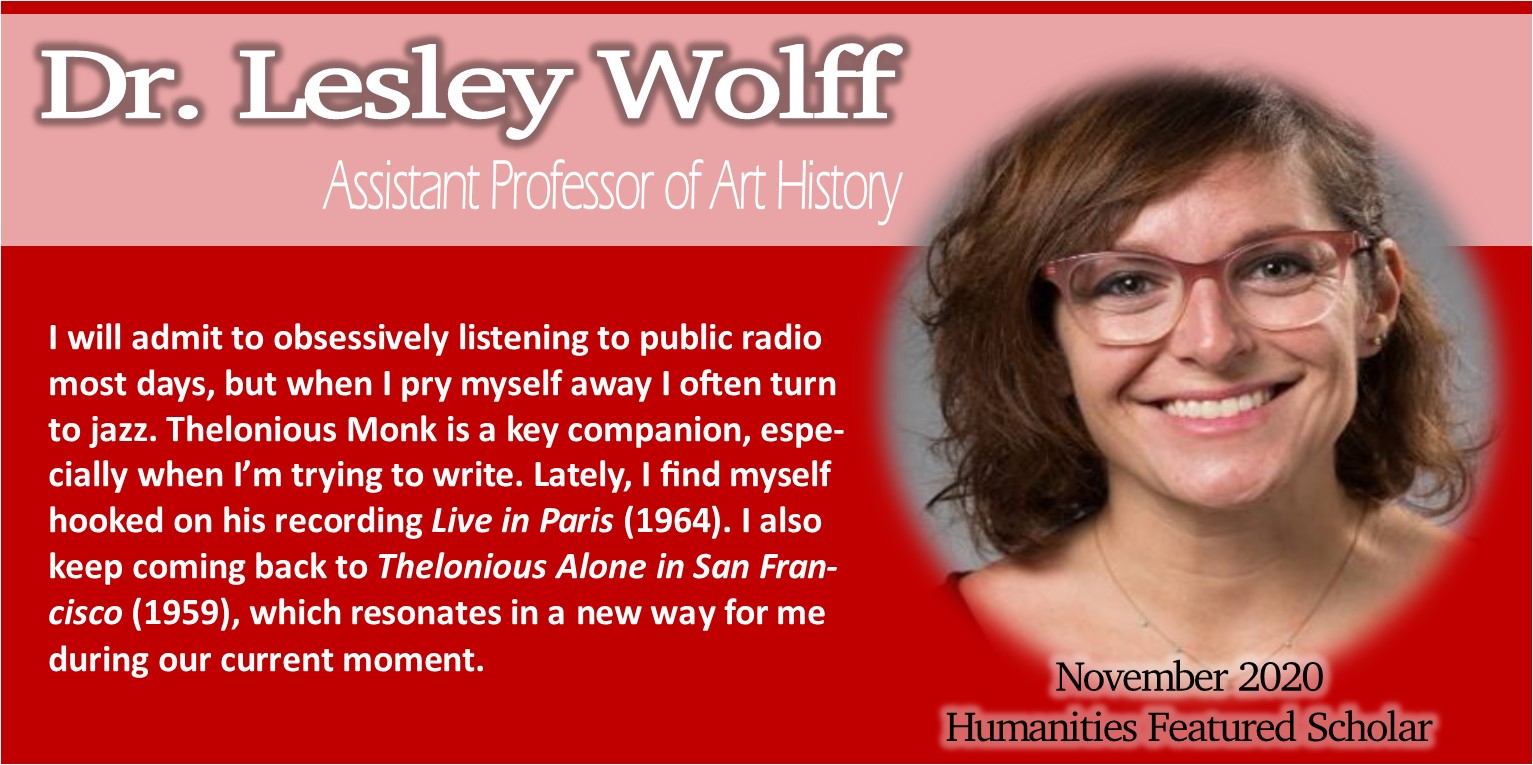Featured Scholar - November 2020

What are you watching/streaming?
I just watched The Last Dance on Netflix. I'm horribly unathletic and know little about sports, but I lived in
Chicago during the era of Michael Jordan, so it was a nostalgic indulgence.
What games are you playing?
I lack the patience for gameplay with two notable exceptions: MarioKart and Connect Four.
What are you listening to?
I will admit to obsessively listening to public radio most days, but when I pry myself
away I often turn to jazz. Thelonious Monk is a key companion, especially when I'm
trying to write. Lately, I find myself hooked on his recording Live in Paris (1964). I also keep coming back to Thelonious Alone in San Francisco (1959), which resonates in a new way for me during our current moment.
What are you reading?
I don't know where to start! An abbreviated list: I'm currently immersed in Katherine
McKittrick's edited volume, Sylvia Wynter: On Being Human as Praxis; Ashanté M. Reese's Black Food Geographies; and Ariella Aïsha Azoulay's Potential History: Unlearning Imperialism. I'm also eager to delve into Arlene Dávila's newest book, Latinx Art: Artists, Markets, Politics. And I have a healthy stack of beautiful exhibition catalogues from this past year
that I'm enjoying, including The Other Side of Now: Foresight in Contemporary Caribbean Art; Scherezade García: From This Side of the Atlantic; and InterSectionality: Diaspora Art from the Creole City.
What are you writing/thinking about?
So much of what I write these days is informed by the strange warping of time and
(dis)embodiment that the pandemic has ushered in and by the heightened sense of urgency
and possibility that recent cries for racial and civic justice for Black lives have
foregrounded in US politics and culture. As I revise my book manuscript on food and
art in 20th century Mexico City, I find myself returning to a central aspect of the
book, namely the relationships among capital, labor, nationalism and racial anxieties.
These issues, which I discuss in a historical context, also pervade our current moment,
in which we in the US are wholly reliant on essential workers to grow, harvest, and
package our food supply, yet so many of these individuals labor on our behalf neither
protected from the dangers of their home countries nor from the threats of COVID-19.
The ways in which COVID reveals the inequities of our supply chain echoes the historical
circumstances I have been researching for years, a fact that leaves me feeling both
reinvigorated to write but also disheartened by the continuity of these issues. My
writing, therefore, often circles back to the undeniable legibility of the past in
our present—a product of the stubbornly persistent legacy of colonial injustices across
the Américas—and to how our ever-expanding visual world is rapidly contending with
the realities and fictions of our past that have led us to this moment. There are
many great artists I have been writing about of late who dealt with these issues historically,
like the Mexican modernist Rufino Tamayo, and today, like the interdisciplinary artists
Scherezade Garcia, Leah Gordon, and Edouard Duval-Carrié. I feel privileged to be
able to navigate these difficult issues through the beauty of their works.
Humanities Center
-
Address
Texas Tech University, 2508 15th Street, Weeks Hall 221, Lubbock, TX 79409-1002 -
Phone
806.742.3028 -
Email
humanitiescenter@ttu.edu
